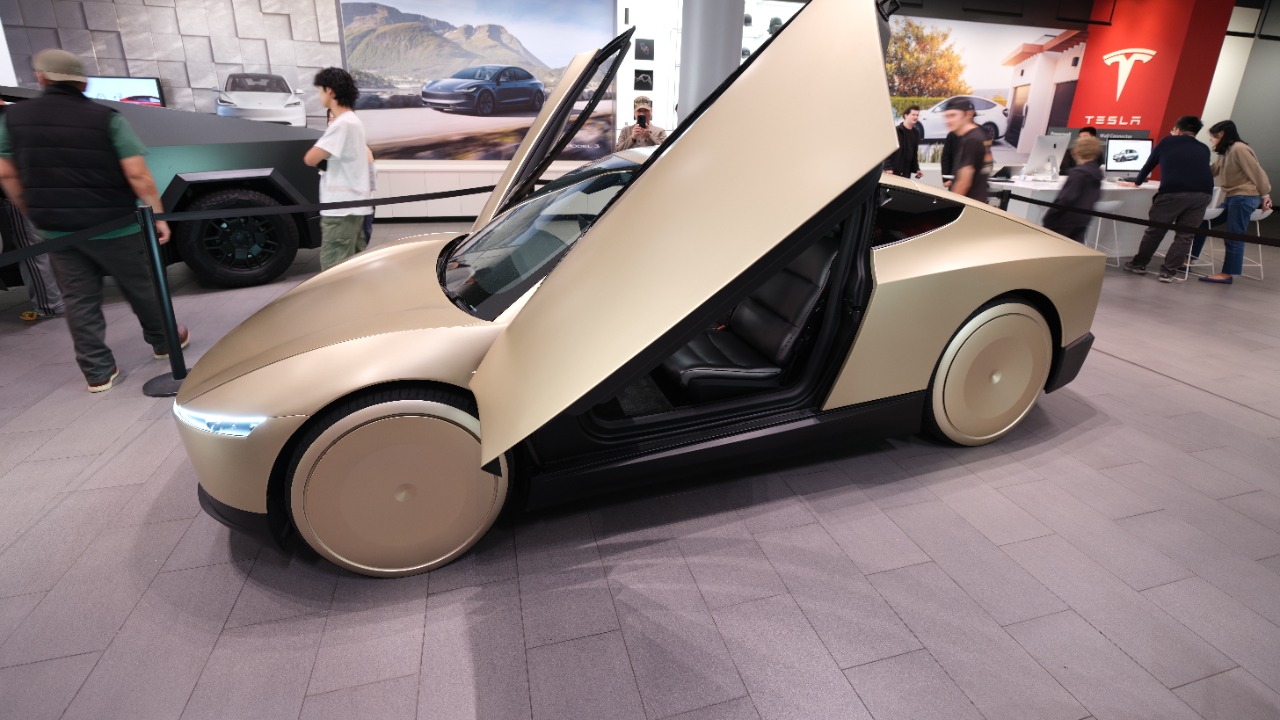
Tesla’s Robotaxi business is on an upward trajectory, propelled by continuous enhancements in its Full Self-Driving (FSD) technology. As of October 22, 2025, the company has made significant strides in autonomous capabilities. However, the journey to achieving a fully reliable, widespread robotaxi deployment is far from over. The road ahead is fraught with challenges in safety, regulation, and scalability. Despite these hurdles, Tesla’s progress holds the potential to revolutionize urban mobility.
Recent Advancements in FSD Technology
Over the years, Tesla’s FSD software has shown remarkable progress in handling complex scenarios such as urban navigation and pedestrian interactions. This improvement is a result of rigorous testing sessions that have helped the software adapt to a wide range of real-world situations. The latest software updates, particularly the version 12.x iterations, have significantly reduced disengagement rates during real-world drives, indicating a positive trend in autonomous capabilities. Reports on FSD improvements corroborate these findings.
Feedback from beta testers has been instrumental in refining the decision-making algorithms of the FSD software. Testers have noted that the software is “getting better, kinda,” reflecting a mixed but generally positive trajectory. These user experiences provide valuable insights into the software’s performance and areas that need further improvement.
Growth Metrics for Robotaxi Deployment
Tesla has been expanding its robotaxi pilot programs in select cities, with the fleet size increasing to over 1,000 vehicles in the testing phase as of October 22, 2025. The company’s ride-hailing trial statistics are also promising, with average trip completion rates exceeding 90% without intervention in controlled environments. These figures are backed by operational logs from the Tesla FSD updates.
In addition, Tesla has been partnering with local authorities for mapping and data collection. For instance, in Austin, Texas, initial robotaxi routes have been mapped, marking a significant step towards the deployment of autonomous taxis in the city.
Technical Challenges in Scaling Autonomy
Despite these advancements, there are still technical challenges to overcome. For instance, the FSD software’s performance in adverse weather conditions such as rain or fog still requires human oversight. This limitation has been highlighted in incident reports from recent field tests. Furthermore, achieving Level 4 autonomy, which implies minimal human intervention, necessitates upgraded sensors in Tesla’s Cybercab vehicles, as per engineering assessments dated October 22, 2025.
Another challenge lies in the AI training data. There are gaps in the representation of diverse scenarios across different geographies. To address this, Tesla plans to iteratively retrain its models, thereby improving the software’s adaptability to various driving conditions.
Regulatory and Safety Hurdles
Regulatory and safety hurdles are another significant obstacle in the path of Tesla’s robotaxi deployment. The company is awaiting approvals from bodies like the National Highway Traffic Safety Administration (NHTSA) for unsupervised robotaxi operations. The safety benchmarks include zero at-fault incidents over 1 million miles, a challenging target to achieve. Furthermore, state-level variations in regulations add to the complexity. For instance, California has stricter permitting requirements compared to Texas, which allows more permissive trials. These variations are based on 2025 regulatory filings.
Experts have commented on the “hard work far from over” in aligning with federal AV standards. This statement underscores the challenges in establishing a comprehensive liability framework for autonomous vehicles, as highlighted in recent FSD analyses.
Competitive Landscape and Market Positioning
When compared to rivals like Waymo, Tesla has an edge in vertical integration but lags in commercial miles driven. However, the company’s aggressive pricing strategies for robotaxi services could give it a competitive advantage. Tesla projects costs under $0.30 per mile once the services are scaled, according to the company’s internal projections shared on October 22, 2025.
Investor reactions to Tesla’s FSD milestone announcements have been mixed. While the advancements in autonomous technology have boosted investor confidence, there is an ongoing need for profitability in autonomous services, which remains a concern.
Future Roadmap and Investment Needs
Tesla has set ambitious goals for its robotaxi business. The company aims to launch unsupervised fleets in multiple U.S. cities by 2026, as outlined in its forward-looking statements. However, achieving this target will require substantial investment in research and development, as well as infrastructure such as charging networks tailored to robotaxis.
Looking ahead, Tesla plans to integrate robotaxi data to refine its Optimus humanoid robots. This strategy underscores the interconnected growth of Tesla’s AI ecosystem, indicating a holistic approach to leveraging AI technology across its product range.
More from MorningOverview